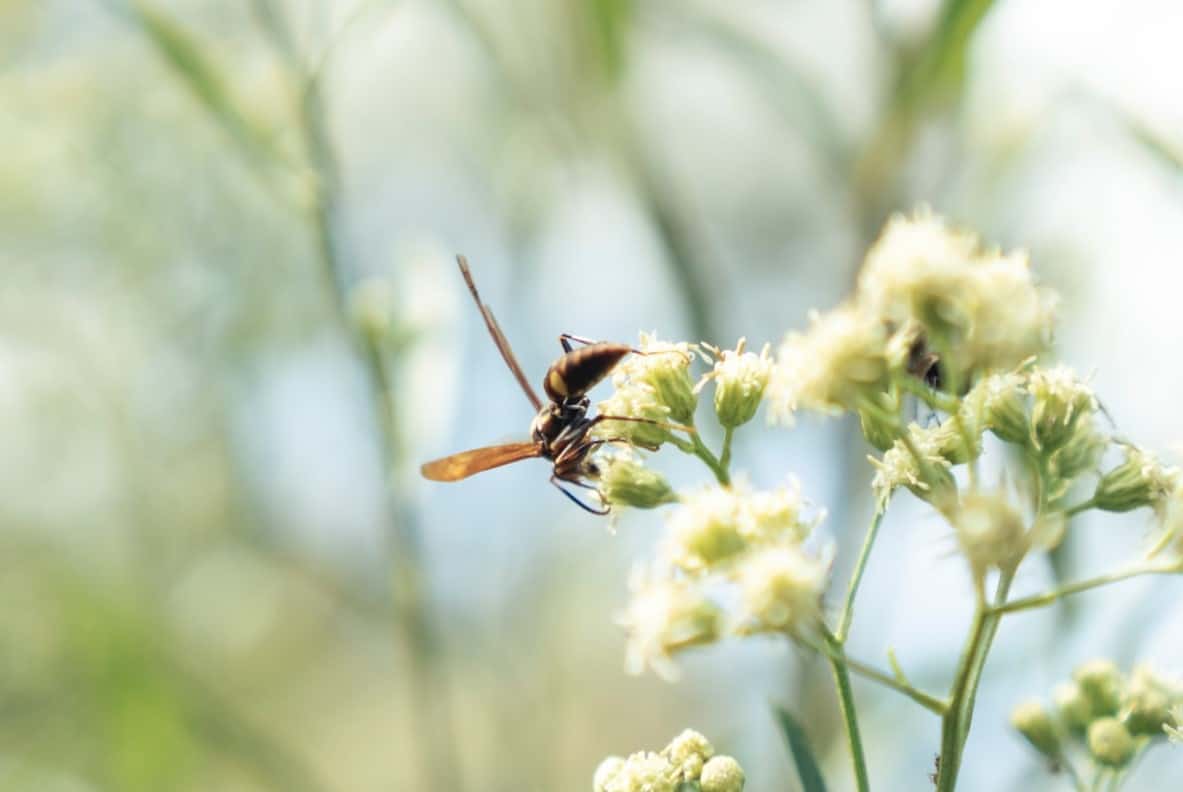Despite the notion that wasps are not as beneficial to the ecosystem as much as bees, the Mexican Honey Wasps have proven their worth in controlling pests and pollinating flowers.
But what is a Mexican Honey Wasp, really?
What is a Mexican Honey Wasp?
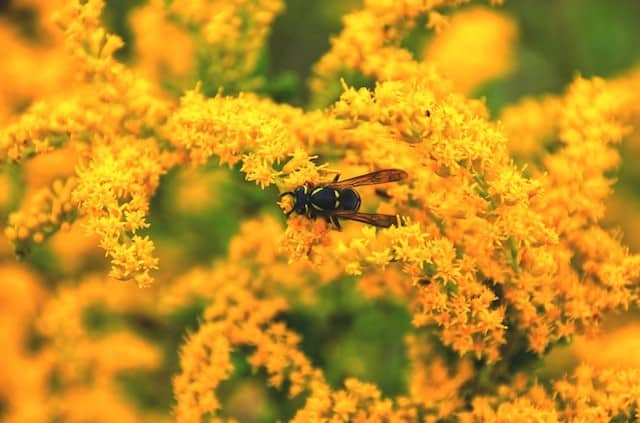
The Mexican Honey Wasp (Brachygastra mellifica) is a social insect commonly found in Mexico and North and South America.
Appearance
The Mexican Honey Wasp is a tiny wasp, smaller than a honey bee. An adult Mexican Honey Wasp measures about 3/4-1 centimeter long. Its abdomen can be as wide as its body length.
This wasp species is distinguished from other wasps by its tear-shaped abdomen and back.
Male Mexican Honey Wasps have striped colors of yellow and black, somewhat similar to a honey bee. The worker wasps are also of the same color combination.
On the other hand, queen Mexican Honey Wasps are more reddish-brown in color around their abdomens. These wasps lack the hairy body that honey bees are prominent for.
Nests
Unlike honey bees that live in hives, these wasps create paper nests that could be as big as 15-20 inches in diameter.
As social wasps, the Mexican Honey Wasp nest can have about 4,000 to 19,000 wasps. Their population thrives during the summer and early fall.
B. mellifica colonies are usually a few meters above the ground in shrubs or trees. In most cases, these wasps prefer living in urban settings where people reside.
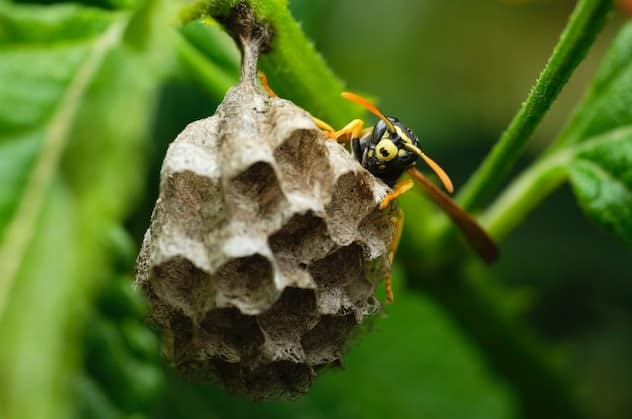
Diet
As a primary food source, these wasps eat insects. A large portion of their diet is from eating Asian citrus psyllids. These are sap-sucking bugs commonly found in citrus groves. The Asian citrus psyllids carry a bacteria that can kill citrus trees and make their fruits inedible.
When there is a lack of this primary food source, Brachygastra mellifica wasps will prey on other insects as a protein source.
These Brachygastra mellifica wasps consume nectar and pollen, just like other common wasps.
While most wasps consume pollen and nectars to feed their bodies, these wasps would also bring home some of these delicacies to feed their larvae.
In particular, this wasp seemed to love the flowers of avocado plants.
Pollinators
As these wasps land on flowers to gather nectars and pollens, they pollinate them too.
However, absent a hairy abdomen and body, these wasps are not as effective pollinators as honey bees.
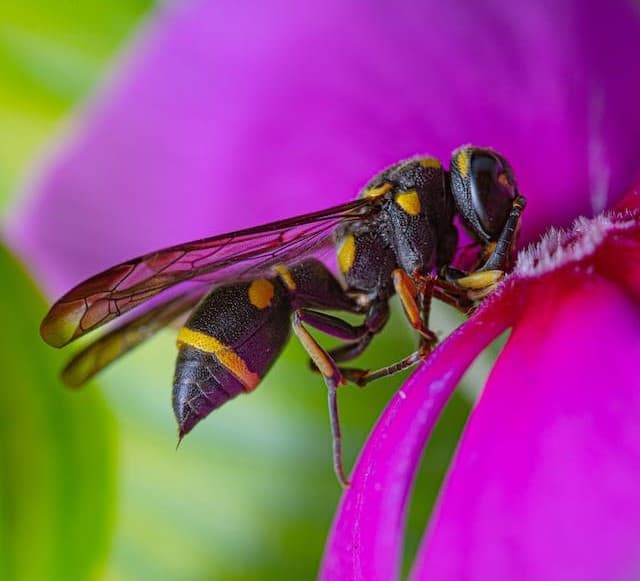
Does a Mexican Honey Wasp Produce Honey?
Many have been so curious about whether wasps make honey, too.
Of all the kinds of wasps, the Mexican Honey Wasp is the only wasp species that makes honey from nectar sources. The honey produced by the Mexican Honey Wasp is quite rare and is considered a delicacy in Mexico.
In some parts of Central and South America, one could find some locals selling honey produced by Mexican Honey Wasps.
Coming home to their nests, the foraging wasps pass the nectar they have gathered to another wasp for processing. This process is called regurgitation and eventually results in the production of honey.
And so, with the exception of honey bees, these wasps are the only species from the wasp family that make honey out of nectar, although in smaller quantities.
An analysis of the honey produced by these wasps shows that it is closely similar to the honey produced by bees. Hence, the honey produced by these wasps is also safe to eat.
However, these wasps are not intense foragers. Adult wasps eat pollen and nectar to feed themselves. At the same time, they collect flower nectar and pollen to bring home.
Their sole reason for collecting nectar and pollen is for the survival of their larvae and not honey production. Unlike the bees, the Mexican Honey Wasps can only produce a limited honey supply within their nest.
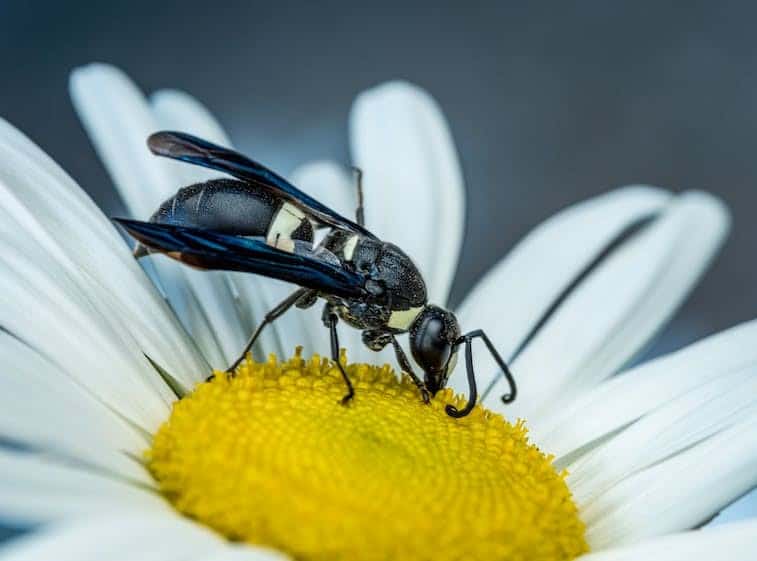
Are Mexican Honey Wasps Aggressive?
Mexican Honey Wasps are not aggressive. In most cases, these social insects are used to ignoring the presence of humans.
As with most wasp species, when threatened or when their nests are disturbed, these wasps can attack and deliver a sting.
The female Mexican Honey Wasp has stingers, while males do not. Females will not hesitate to sting if they find the need to protect their nests and colony.
